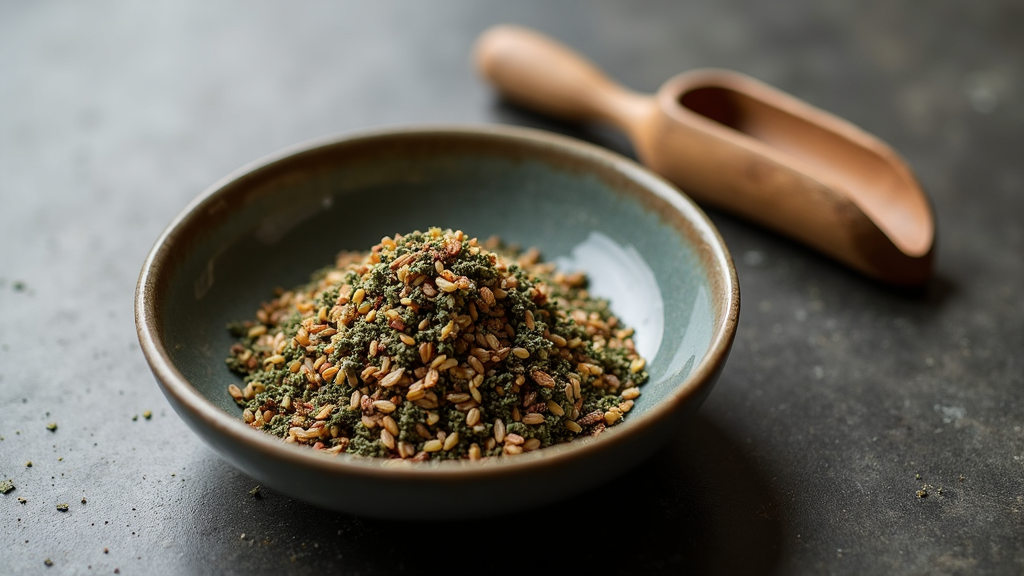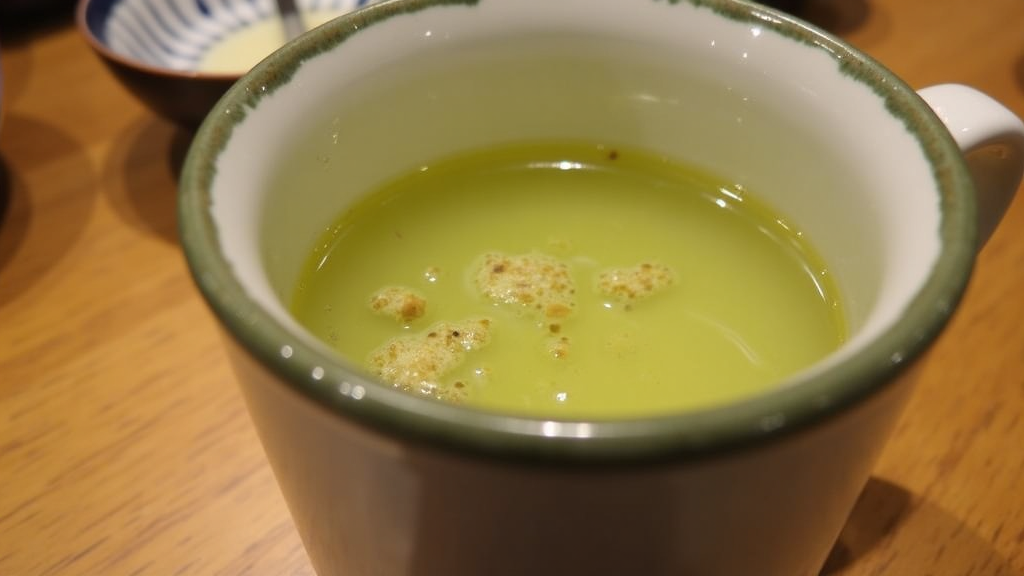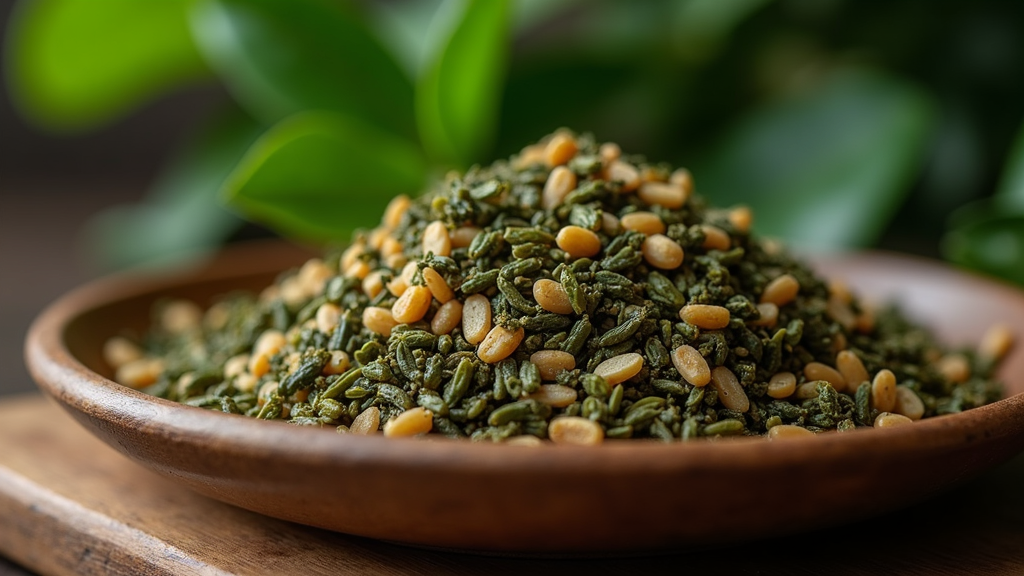
One sip of genmaicha, and you’re met with a cozy toastiness wrapped in gentle green tea. It’s comfort in a cup—simple, humble, and unexpectedly unique.
Genmaicha, or “brown rice tea,” is a traditional Japanese blend that brings together crisp green tea leaves with roasted brown rice. This magic pairing creates a flavor profile that’s grounding and warm, with nutty, savory notes balanced by grassy freshness.
What started as a budget-friendly staple has earned its place as a beloved comfort tea, perfect for any season or setting.
In this guide, I’ll walk you through what makes genmaicha special, how it’s made, what it tastes like, how to brew it at home, and a few creative ways to enjoy it.
The Story Behind Genmaicha: Origins and Traditions
Genmaicha started as “the people’s tea” in Japan—a resourceful way to stretch a limited supply of precious green tea leaves by blending them with roasted brown rice. For families looking to make tea more accessible and affordable, this blend became a go-to.
Over time, though, people fell in love with its flavor, not just its frugality. The roasted rice adds a nutty depth that softens the green tea’s sharpness, resulting in a mellow, inviting cup. Genmaicha found its way into homes across Japan, from rural kitchens to city apartments, and it remains a household staple to this day.
You might hear stories linking genmaicha to monks or ancient legends, but its enduring charm lies in its simplicity—a delicious reminder of making the most of what you have.
How Genmaicha Is Made: From Field to Cup
At its core, genmaicha consists of two ingredients: green tea and roasted brown rice. Here’s how they come together:
- Roasting the Rice: The brown rice is soaked, steamed, and then roasted until golden. Some grains puff up like mini popcorn—a fun and traditional touch.
- Choosing the Tea: Most blends use bancha, a later-harvested, mellow green tea, or sometimes sencha, which is brighter and more grassy.
- Blending: Once both are ready, the ingredients are mixed. Some blends are 50/50, while others favor either the tea or the rice.
The result? A straightforward, no-frills blend that still feels special.
Pro tip: Look for fresh, vibrant leaves and rice that smells nutty and slightly sweet. Puffy grains are a good sign of traditional roasting.
What Does Genmaicha Taste Like?
The flavor is what sets genmaicha apart. The roasted rice gives off a popcorn-like aroma, while the green tea adds a grassy brightness and soft bitterness.
The taste is:
- Nutty and slightly sweet
- Mildly vegetal with hints of toasted bread or caramel
- Smooth, with little to no astringency
For anyone who finds straight green tea too sharp, genmaicha is a gentle introduction. It also pairs beautifully with food—especially rice dishes, sushi, or anything with a salty umami profile.

The Benefits of Drinking Genmaicha
Beyond taste, genmaicha offers some wellness perks:
- Lower caffeine: Thanks to the added rice, it contains less caffeine than straight green tea. Great for afternoons or sensitive stomachs.
- Antioxidants: Like all green teas, it contains catechins, known for their protective, anti-inflammatory properties.
- Stomach-friendly: Genmaicha is smooth and easy to digest, even on an empty stomach.
- Calming scent: The warm, roasted aroma has a naturally relaxing effect.
Some say the roasted brown rice contributes trace minerals, though that varies by blend. Either way, it’s a soothing tea you can feel good about sipping.
On top of that, the smooth character of genmaicha feels like a gentle reset in the middle of a hectic day.
How to Brew Genmaicha at Home
You don’t need any special tools or skills to brew a cozy cup of genmaicha:
Basic Brewing Instructions:
- Use fresh, filtered water if possible
- Heat to about 80°C/175°F (avoid boiling)
- Use 1–2 teaspoons of loose leaf per cup
- Steep for 1–2 minutes
Genmaicha is forgiving, but shorter steep times help avoid bitterness and keep things balanced.
Optional Tools:
- Kyusu (Japanese teapot): Has a built-in strainer and looks great on the table.
- Ohtomber Tea Infuser Strainer: Easy to use and clean.
- Chefman Electric kettle with temp control: Great for all green teas.
Want to try it cold? Genmaicha makes a wonderful cold brew: Steep in cool water for several hours, then strain and chill. Refreshing and smooth.
Buying the Best Genmaicha
You can find genmaicha in most natural food stores or online. Here’s what to watch for:
- Leaf-to-rice ratio: Look for a blend that includes plenty of both.
- Freshness: Avoid dusty or dull-looking blends. It should smell rich and toasty.
- Reputable brands: Some trusted names include:
Also, keep an eye out for “matcha-iri genmaicha“ (genmaicha with added matcha powder). It has a brighter green color, stronger flavor, and a bit more caffeine.
Avoid blends that are mostly rice with very little tea—they won’t deliver the full genmaicha experience.

Creative Ways to Enjoy Genmaicha
There are more ways to enjoy this tea than just steeping it hot:
- Genmaicha Latte: Add steamed milk (plant-based or dairy) and honey for a cozy treat.
- Cold Brew: Great for summer sipping.
- Cooking: Use crushed genmaicha in cookies, sprinkled over rice, or mixed into savory dishes.
- Tea + Sweets: Perfect with Japanese sweets (wagashi), cookies, or mochi.
Genmaicha’s flexible flavor makes it easy to experiment with—get creative and share your finds!
Why I Always Keep Genmaicha Around
Genmaicha has a grounded, unpretentious charm that I always come back to. It’s easy to love, easy to brew, and pairs with just about anything.
It found its way into my routine one evening over takeout sushi—nothing fancy, just a simple meal and a cozy cup. The toasty rice notes blended so well with the sushi rice and mellowed out the sharper flavors. It wasn’t planned, but it just worked.
Since then, it’s become my quiet favorite for sushi nights. I even wrote a full post on green tea and sushi pairings if you’re curious—you can read it here. Sometimes the best pairings are the ones you stumble on by accident.
Whether you’re building your tea collection, need something to relax with after lunch, or just want a cup that feels like a warm blanket, genmaicha delivers.
Give it a try the next time you see a pack—you might find yourself reaching for it again and again.
Related Reads:
- Exploring The Role Of Green Tea In Japanese Tea Ceremonies
- Unlocking The Secrets Of Sencha: Japan’s Signature Green Tea
- Green Tea: A Beginners Guide
Have a favorite way to enjoy genmaicha? Share your ideas in the comments
This post contains affiliate links. If you make a purchase through these links, I may earn a commission at no extra cost to you.
